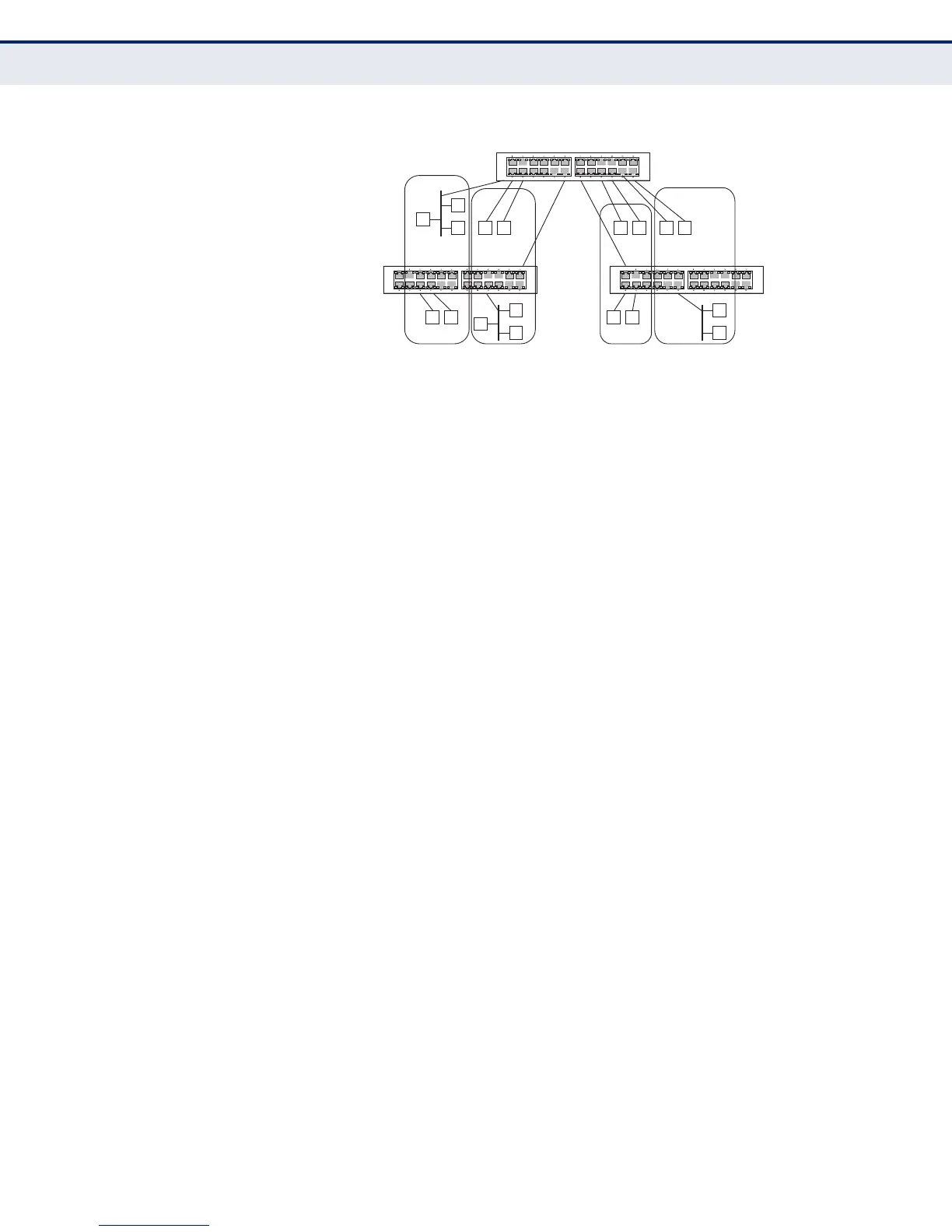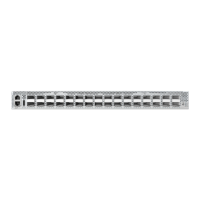C
HAPTER
6
| VLAN Configuration
IEEE 802.1Q VLANs
– 156 –
Figure 51: Using GVRP
Forwarding Tagged/Untagged Frames
If you want to create a small port-based VLAN for devices attached directly
to a single switch, you can assign ports to the same untagged VLAN.
However, to participate in a VLAN group that crosses several switches, you
should create a VLAN for that group and enable tagging on all ports.
Ports can be assigned to multiple tagged or untagged VLANs. Each port on
the switch is therefore capable of passing tagged or untagged frames.
When forwarding a frame from this switch along a path that contains any
VLAN-aware devices, the switch should include VLAN tags. When
forwarding a frame from this switch along a path that does not contain any
VLAN-aware devices (including the destination host), the switch must first
strip off the VLAN tag before forwarding the frame. When the switch
receives a tagged frame, it will pass this frame onto the VLAN(s) indicated
by the frame tag. However, when this switch receives an untagged frame
from a VLAN-unaware device, it first decides where to forward the frame,
and then inserts a VLAN tag reflecting the ingress port’s default VID.
CONFIGURING VLAN
GROUPS
Use the VLAN > Static (Add) page to create or remove VLAN groups. To
propagate information about VLAN groups used on this switch to external
network devices, you must specify a VLAN ID for each of these groups.
CLI REFERENCES
◆ "Editing VLAN Groups" on page 836
PARAMETERS
These parameters are displayed in the web interface:
Add
◆ VLAN ID – ID of VLAN or range of VLANs (1-4093).
◆ Status – Enables or disables the specified VLAN.
Modify
◆ VLAN ID – ID of configured VLAN (1-4093).
◆ VLAN Name – Name of the VLAN (1 to 32 characters).
Port-based VLAN
1
2
9
3 4
10 11
12
13
14
5 6 7 8
15 16
18
19

